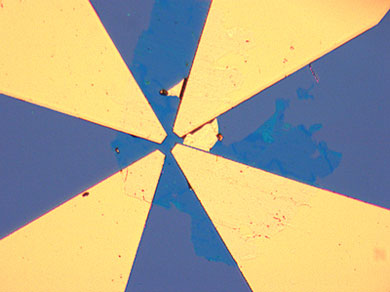Scientists of the Rensselaer Polytechnic Institute have devised a novel technique to produce energy using flowing water. This technique aspires to enhance the development of self-powered microsensors that are used for economic and precise oil exploration.
 Researchers at Rensselaer Polytechnic Institute have developed a new method to harvest energy from flowing water
Researchers at Rensselaer Polytechnic Institute have developed a new method to harvest energy from flowing water
The research was led by Nikhil Koratkar, a Professor of the Rensselaer Polytechnic Institute. The scientists found that miniscule quantities of electricity could be generated by flowing water over graphene surfaces. They exhibited the generation of 85 nW of power from a graphene sheet that measured 0.03 by 0.015 mm. The power generated is adequate to energize tiny sensors introduced in fluids or water.
The sensors are used to identify the presence of hydrocarbons when the water moves through crevices and cracks present at a considerable depth from the surface of the earth. This enables the sensors to find hidden places of natural gas and oil. The flowing water offers a dependable power source when the water flows over the graphene-coated sensors. This power is essential for the sensors to transmit to the surface, accumulated information and data.
Koratkar mentioned that gas and oil firms would like to enhance this technique by sending out nanoscale or microscale sensors into existing and new drill wells. The scientists developed an experimental water tunnel device to test power generation when the water flows over the graphene surface at dissimilar velocities. They also utilized molecular dynamics simulations to understand the physics of this technique in a better manner. The scientists found that the chloride ions dissolved in water attach to the graphene surface. When the water flows over the graphene surface, the friction force between the adsorbed chloride ion layer and the water flow causes the ions to move along the direction of flow. The ions’ motion forces the charges that are present in graphene to move in the flow direction, thus generating an internal current.